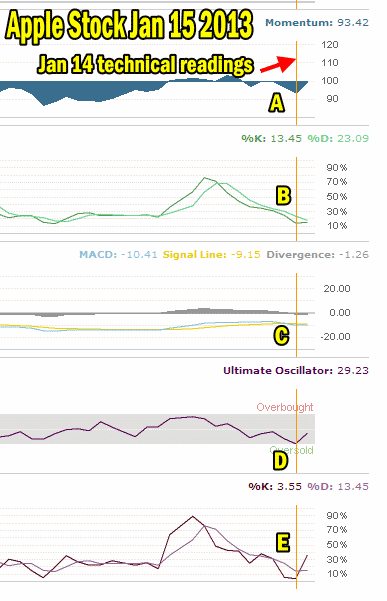Options Lab Part 2 Income Strategy for the Faint of Heart
Post on: 16 Март, 2015 No Comment

Selling call options using the stocks in your portfolio as collateral is one way to potentially generate income. And played the right way, it’s a relatively conservative strategy. That’s because the shares act as collateral for your short options. Although the strategy isn’t appropriate for everyone, selling, or “writing,” covered calls is one of the most conventional strategies that traders use to achieve this. These options are “covered” because you already own the shares that you may be required to deliver to the call owner—hence the collateral. You may also lose your collateral. We get into that below.
To execute a typical covered call strategy, you must own at least 100 shares of a given stock (remember: one standard monthly option contract represents 100 shares). If that sounds like too much to bite off, you might consider relatively new-on-the-scene mini options contracts.
Textbook Time
Covered call writing is defined as the sale of a call option covered by underlying shares already held or purchased at the same time the call is sold. When you sell call options against your shares, other investors pay you cash today in exchange for the opportunity to buy your shares from you at a predetermined price (the strike price) during a predetermined amount of time (before the option’s expiration date). For this reason, the covered call is considered a neutral to moderately bullish strategy. Plus, the premium received from the call’s sale provides some degree of downside stock price protection for a limited time. Covered calls may be used in an appropriately approved Keogh (self-employed retirement plan), margin, cash account, or individual retirement account (IRA).
If your short option is assigned, your potential upside profit is limited to the premium received from the call’s sale plus any positive difference between its strike price and the stock purchase price. If no assignment takes place and the call expires out of the money, the upside profit potential is any gain in share price plus the initial option premium. The maximum downside loss potential hangs entirely on the underlying shares declining to zero plus all transaction costs. The breakeven point is the purchase price of the underlying shares less the option premium (figure 1).
FIGURE 1: As with any short option position, an increase in volatility has a negative financial effect on the covered call, while a drop in volatility has a positive effect. Time decay has a positive effect. For illustrative purposes only. Past performance does not guarantee future results
Hardworking
Selling covered calls can sometimes earn you a triple play. After you sell a covered call, you collect your premium, and unless the stock is called away, you can still continue to receive dividends and capital gains on the underlying stock. That’s the good news. On the other hand, the option buyer (the person who bought the call you sold) may have a strategy. He or she may also want that dividend, so as the ex-dividend date approaches, the chances that your stock will be called away from you may increase.
If the option is deep in the money, and the dividend is large enough, there’s a higher probability the stock will be called away from you before you get to collect the dividend. In fact, anytime you sell a call option on a stock you own, you must be prepared for the possibility that the stock will be called away. Remember that when you sell a covered call, you receive premium, but you also give up some control of your stock while you are short the call. On the plus side, you can calculate in advance an expected return for the position if assignment is made and your stock is called away. Although early assignment is always possible, it’s somewhat predictable in certain cases before a dividend is scheduled to be paid to eligible shareholders. Keep in mind that only options that are in the money would likely be exercised to collect the dividend, although short options can be assigned at any time regardless of the in the money amount.
Learning in Action
Our example excludes commissions and other transaction costs, dividends, margins, and taxes. Always consult with your tax professional regarding your personal circumstances.
Let’s say you buy 100 shares of ZYX for $41.75 each because you believe the stock might trade at this level, or moderately higher or lower, over the near term. You write (remember, that means “sell”) an out-of-the-money, three-month ZYX 45 call at $1.25. That means you agree to sell ZYX at $45 should you be assigned. You’re comfortable with this because you believe the stock will not rise above $45 and will not likely be assigned.
If ZYX drops significantly below $41.75, you’ll have to shoulder an unrealized loss on the 100 shares owned, offset partially by the $1.25 per-share premium you collected when you sold the call. Your breakeven is $41.75 (ZYX stock purchase price) – $1.25 (option sale price), which equals $40.50. So, as you can see, the $1.25 represents some degree of downside price protection on ZYX.
Be aware that there are four possible scenarios at expiration:
- ZYX CLOSES BELOW THE STRIKE PRICE AT EXPIRATION. In this scenario, your short call option expires out of the money, so you get to keep the option premium. In all likelihood, you’ll also get to keep your long stock position.

TODAY’S TAKE-HOME: Covered calls, when used appropriately in a diverse portfolio, can be a valuable go-to tool as you balance risk and reward. They’re relatively conservative and a desirable starting point for some because you can plan for possible scenarios (and put on new trades, if necessary). You know your covered call’s strike price and expiration date, you know your breakeven point and comfort level, and although you can’t control volatility, you can certainly track it. Something to think about.
More on options














